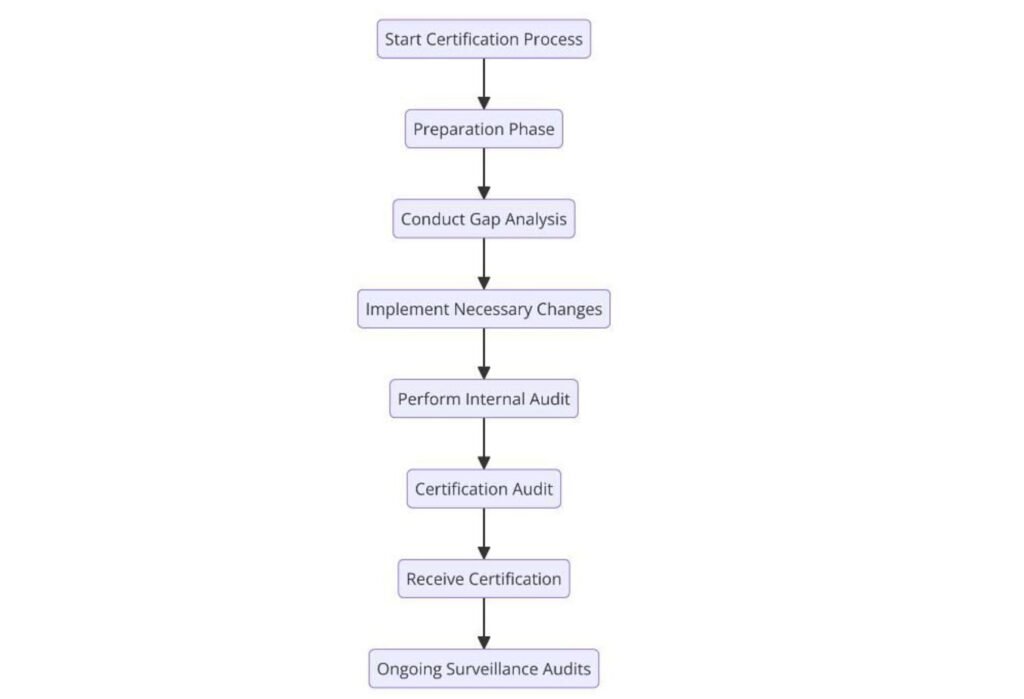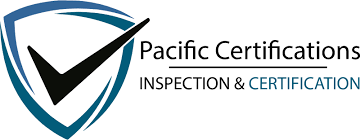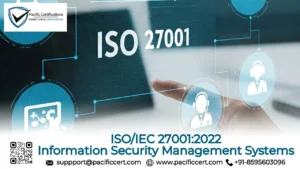What is ISO 10007:2017?

ISO 10007:2017 provides guidelines for configuration management within quality management systems. Configuration management is critical for organizations that design, develop, manufacture or maintain complex products or systems, ensuring that all product features, processes and documentation remain consistent and traceable throughout the product lifecycle. The standard offers a structured approach to manage changes, maintain product integrity, and align organizational objectives with customer and regulatory requirements. By implementing ISO 10007, organizations can systematically control product configurations, reduce errors, improve product quality and strengthen customer confidence in their outputs.
To begin your ISO 10007 certification journey, contact Pacific Certifications at support@pacificcert.com.
Purpose of ISO 10007
The purpose of ISO 10007 is to provide organizations with a framework for establishing, implementing, maintaining, and improving configuration management processes. This ensures that products and services maintain their intended functionality and quality throughout the lifecycle. Effective configuration management reduces errors, prevents costly rework, and ensures that changes are evaluated and implemented in a controlled manner.
The standard also supports product traceability, enabling organizations to show compliance with contractual, statutory and regulatory obligations. ISO 10007 helps in integrating configuration management with overall quality management systems to maintain consistency in processes, documentation and outputs.
Scope and Applicability of ISO 10007
ISO 10007 applies to any organization, regardless of size or sector, that produces products, systems or services requiring configuration control. It is particularly relevant to industries with complex products such as manufacturing, aerospace, automotive, engineering, software and defence. The standard is applicable to all stages of a product lifecycle, from design and development to production, operation, maintenance, and eventual disposal.
Organizations can implement ISO 10007 alongside ISO 9001 to strengthen their quality management systems and integrate configuration management into broader quality practices. By applying ISO 10007, organizations ensure that all product and process changes are evaluated, documented and traceable, maintaining consistency and reliability across all operational levels.
Clause-wise Structure of ISO 10007:2017
Clause | Title | Description |
1 | Scope | Defines applicability to organizations requiring configuration management and its integration with quality management systems. |
2 | Normative References | Lists referenced standards such as ISO 9001 relevant to quality and management systems. |
3 | Terms and Definitions | Clarifies key concepts such as configuration, baseline, configuration item and change control. |
4 | Configuration Management Principles | Outlines the basic principles of configuration management including planning, identification, control, status accounting and audits. |
5 | Configuration Management Planning | Provides guidance on planning the configuration management process, assigning responsibilities and defining procedures. |
6 | Configuration Identification | Details the identification of configuration items, baselines and documentation to maintain control over product attributes. |
7 | Configuration Change Control | Specifies procedures for managing changes to products, processes and documentation, ensuring controlled and documented changes. |
8 | Configuration Status Accounting | Explains how to record and report configuration information, including changes, versions and approvals. |
9 | Configuration Audits | Details internal and functional audits to verify that configuration items conform to requirements and standards. |
ISO 10007 Configuration Management Requirements
The ISO 10007 Configuration Management Requirements guide organizations in establishing practices that cover all processes and lifecycle stages of a product or system. They provide structured methods to ensure consistency, effective control, and traceability throughout operations. Below are the key ISO 10007 Configuration Management Requirements:

- Establish a configuration management policy aligned with the organization’s quality objectives.
- Identify and document all configuration items, baselines and associated documentation.
- Implement controlled procedures for evaluating, approving and documenting changes.
- Maintain traceability of changes to ensure alignment with contractual, regulatory and customer requirements.
- Conduct configuration status accounting to provide accurate, updated records of product configurations and changes.
- Perform configuration audits to verify conformity with baseline specifications, internal standards and contractual obligations.
- Integrate configuration management activities with the organization’s overall quality management system to improve process efficiency and product integrity.
- Assign clear responsibilities and authorities for configuration management to ensure accountability.
To begin your ISO 10007 certification journey, contact Pacific Certifications at support@pacificcert.com.
What are the benefits of ISO 10007:2017?
Implementing ISO 10007 offers significant advantages for product quality, process control, and organizational efficiency. Below are some of the key benefits:

- Provides structured control over product and process changes, reducing errors and rework.
- Improves traceability and accountability for all product configurations throughout the lifecycle.
- Supports regulatory compliance by ensuring changes are documented and auditable.
- Strengthens integration between configuration management and quality management systems, improving overall operational reliability.
- Improves customer confidence by showing adherence to international quality and configuration management standards.
- Reduces costs associated with uncontrolled changes, recalls and inconsistent product performance.
- Enables more predictable product outcomes and facilitates effective planning and resource allocation.
- Helps organizations manage complex products and systems with multiple interdependent components effectively.
What is the Certification Process for ISO 10007?
The ISO 10007 certification process involves several key steps to verify organizational alignment with the standard:

- Gap Analysis – Assess current configuration management practices against ISO 10007 requirements to identify gaps.
- Process Documentation – Develop and formalize policies, procedures and records for configuration management.
- Internal Implementation – Apply the configuration management process to projects, including item identification, change control and status accounting.
- Internal Audits – Conduct audits to ensure that configuration management procedures are being followed effectively.
- Corrective Actions – Address non-conformities and implement improvements based on audit findings.
- Pre-assessment by Certification Body – Optional review to identify any remaining gaps before formal certification.
- Certification Audit Stage 1 – Review documentation and readiness for full certification.
- Certification Audit Stage 2 – Evaluate implementation, verify records and assess compliance with ISO 10007.
- Certification Issuance – Upon successful audit, the organization is certified for ISO 10007.
- Surveillance Audits – Periodic audits to ensure continuous compliance and effective configuration management practices.
What is the Certification Timeline for ISO 10007:2017?
The ISO 10007 certification timeline usually spans three to six months, depending on the size of the organization, complexity of configuration items, and maturity of existing quality and management systems. Organizations with mature quality management processes may achieve certification in approximately three months, while organizations requiring process development or significant corrective actions may need up to six months. The timeline accounts for gap analysis, internal implementation, documentation, audits, corrective actions and certification issuance.
What is the Certification Cost for ISO 10007:2017?
Certification costs for ISO 10007 vary based on organizational size, number of configuration items, complexity of processes and extent of audits required. Costs generally include internal preparation, staff training, documentation, testing, internal audits, and fees charged by the certification body. While larger organizations may incur higher costs due to increased scope, the investment ensures improved product integrity, regulatory compliance, and operational reliability, ultimately leading to cost savings and improved market confidence.
Market Trends
The adoption of ISO 10007 has increased globally due to the rising complexity of products and systems in sectors such as automotive, aerospace, defence and high-tech manufacturing. Companies are seeking better change control mechanisms to maintain competitive advantage and ensure product safety. In the recent years, demand is further driven by digital transformation, integration with PLM and ERP systems and the need for traceable documentation in supply chains.
Emerging trends include combining configuration management with digital twins, AI-assisted change control, and improved collaboration across global teams. Organizations are increasingly using ISO 10007 as part of broader quality initiatives to reduce operational risks, support innovation and comply with international procurement and regulatory standards.
How Pacific Certifications Can Help?
Pacific Certifications supports organizations in achieving ISO 10007 certification by providing:
- Gap assessments of current configuration management processes
- Review and guidance on documentation and procedural alignment
- Assistance during internal audits and preparation for third-party certification
- Verification of change control, status accounting, and audit readiness
- Accredited training programs for staff to implement and maintain ISO 10007
To schedule a certification audit or discuss ISO 10007 compliance, contact support@pacificcert.com.
Training and Courses
Pacific Certifications provides ISO 10007-focused training for personnel involved in configuration management:
- Lead Auditor Training– Equip staff to conduct audits of configuration management processes.
- Lead Auditor Training– Train personnel to integrate ISO 10007 requirements into organizational processes.
- Internal Auditor Training– Prepare internal teams to perform audits and maintain compliance.
Contact support@pacificcert.com for enrolment and course details.
FAQs
Is ISO 10007 mandatory?
ISO 10007 is not legally mandatory. However, organizations seeking better configuration control, improved product quality and alignment with ISO 9001 practices find it highly beneficial.
How long does certification take?
The certification process spans three to six months depending on the size of the organization, complexity of products and maturity of existing quality systems.
What are the main benefits of implementing ISO 10007?
It improves traceability, reduces errors, ensures controlled changes, supports compliance, strengthens customer confidence and integrates configuration management with quality management systems.
Can small organizations implement ISO 10007?
Yes, ISO 10007 is scalable and can be adapted to organizations of any size. Smaller organizations may have simpler processes, but the core principles of configuration management still apply.
How often do I need to renew ISO 10007 certification?
ISO 10007 certification is valid for three years. Surveillance audits are conducted annually to ensure ongoing compliance.
What is the role of configuration audits in ISO 10007?
Configuration audits verify that products and processes conform to established baselines and standards, ensuring that changes are documented and traceable.
What are the core elements of configuration management in ISO 10007?
ISO 10007 organizes CM into five linked activities: planning, configuration identification, change control, status accounting, and verification & audit. Running all five together gives traceability and controlled change across the product or service life cycle.
What is a configuration baseline and why does it matter?
A configuration baseline is the formally approved snapshot of a system’s defined attributes at a point in time. It’s the reference you manage changes against, protecting consistency as designs evolve and products are built, released and maintained.
How does ISO 10007 relate to ISO 9001?
ISO 10007 is guidance that helps organizations meet quality-system aims, especially around documented change control and traceability. So it’s often used to support ISO 9001 implementations without adding new certification requirements.
Is a new edition of ISO 10007 coming?
Yes. ISO has opened a new work item (ISO/AWI 10007) to revise and replace the 2017 edition, with drafting underway. Keep an eye on ISO’s project page for updates.
Ready to get ISO 10007:2017 certified?
Contact Pacific Certifications to begin your certification journey today!
Suggested Certifications –
Read more: Pacific Blogs






